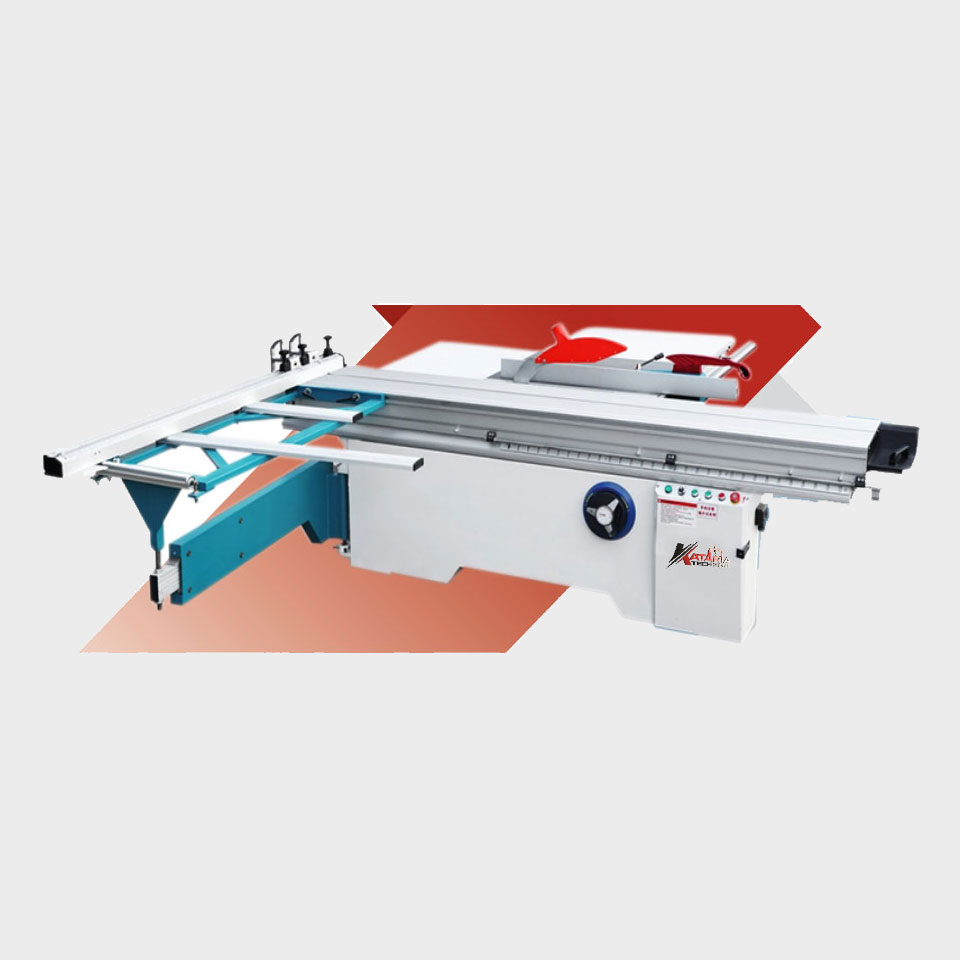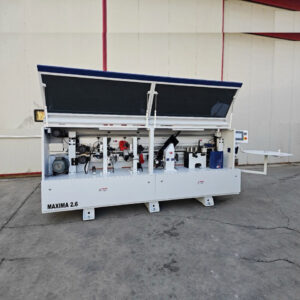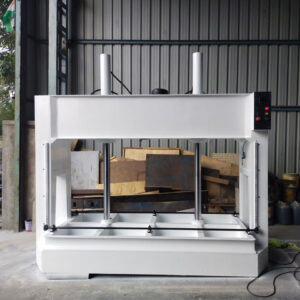Machine Is Capable Of Doing Work On Wood, MDF, Plywood, HDHMR
| Model | CW-MF6132 |
|---|---|
| Saw blade lifting mode | Electric lift |
| Saw blade angle | 0-45 deg. With digital display (electric tilt is optional) |
| Slide table size | 3200*375mm |
| Large saw power | 5.5Kw |
| Small saw power | 1.1KW |
| Maximum sawing length | 3100mm |
| Maximum cutting width | 1250mm |
| Maximum sawing thickness | 80mm |
| Large saw blade speed | 4000-6000r/min |
| Small saw blade speed | 7000-8000r/min |
| Large saw blade size | Outer diameter 300mm/inner diameter 30mm |
| Small saw blade size | Outer diameter 120mm/inner diameter 20mm |
| Spindle diameter | 30mm |
The Precision Powerhouse: Understanding the Panel Saw in Modern Woodworking
In the realm of woodworking and furniture manufacturing, precision is not just a desirable trait; it is an absolute necessity. From cutting large sheets of engineered wood to exact dimensions for cabinets and wardrobes, to sizing solid timber for intricate joinery, the initial cut sets the stage for the entire production process. At the forefront of this critical operation stands the Panel Saw, a cornerstone machine in any professional workshop or industrial facility.
More than just a cutting tool, a panel saw is a high-precision instrument designed to process large, unwieldy sheets of material – such as MDF, particle board, plywood, laminates, and solid wood panels – with unparalleled accuracy, speed, and efficiency. Its ability to deliver perfectly square and chip-free cuts is paramount for ensuring seamless assembly, optimal material utilization, and a superior final product.
Why the Panel Saw is Indispensable
The modern furniture industry heavily relies on panel-based materials due to their cost-effectiveness, stability, and versatility. However, these large sheets (often 8×4 feet or larger) are challenging to cut accurately with conventional saws. Here’s why the panel saw became indispensable:
- Accuracy: Panel saws are engineered for extreme precision, ensuring cuts are perfectly square and true, which is vital for tight-fitting joints and overall product quality.
- Efficiency: They drastically reduce cutting time compared to manual methods, enabling high-volume production.
- Material Optimization: Precise cuts minimize waste, leading to better material yield and cost savings.
- Safety: Designed with safety features that make cutting large panels significantly safer than freehand methods.
- Finish Quality: Many panel saws incorporate scoring blades to prevent chipping and ensure a clean, ready-to-band or finish edge.
Types of Panel Saws
Panel saws are broadly categorized into two main types, each suited for different workshop sizes, budgets, and production demands:
-
Vertical Panel Saws:
- Description: In a vertical panel saw, the material is loaded vertically onto a frame, and the saw head, which includes both the main blade and often a scoring blade, moves horizontally along a rail to make rip cuts (along the length) or vertically to make crosscuts (across the width).
- Space-Saving: Their most significant advantage is their compact footprint. They take up much less floor space than horizontal panel saws, making them ideal for smaller workshops or those with limited area.
- Ease of Loading: Loading large sheets vertically can be more ergonomic for some operators, especially when space is tight.
- Typical Applications: Suited for cutting single sheets or smaller batches of panels, common in custom furniture shops, cabinet makers, sign makers, and building material suppliers.
-
Horizontal Panel Saws (Sliding Table Saws / Beam Saws):
- Description: These are the workhorses of high-volume production facilities. The panel (or stack of panels) rests horizontally on a large sliding table or a fixed bed, and the saw carriage moves through the material.
- Sliding Table Saws: These are common in medium to large workshops. They feature a large, precision-ground sliding table that supports the workpiece and moves with it through the blade. Ideal for single-sheet or small-stack cutting. Often referred to as “Table Saws with Sliding Tables” in a broader context.
- Beam Saws (Pressure Beam Saws): These are fully automated, industrial-grade machines designed for cutting multiple sheets simultaneously (stack cutting). A large pressure beam clamps the entire stack of panels firmly to the table, and the saw carriage, often running on a gantry, cuts through the stack with extreme accuracy. Highly efficient for mass production.
- High Volume and Automation: Best for large-scale operations where speed, automation, and cutting multiple panels at once are critical.
- Space Requirement: Require a significant amount of floor space.
Key Features and Operational Components
A modern panel saw incorporates several sophisticated features to ensure precision, efficiency, and safety:
-
Scoring Unit: This is a crucial feature, especially when cutting laminated or veneered panels. A small, secondary blade, the “scoring blade,” rotates in the opposite direction to the main blade and cuts just ahead of it. It makes a shallow cut on the bottom surface of the panel, preventing chipping and tear-out as the main blade passes through. This ensures a perfectly clean, chip-free edge, ready for edge banding.
-
Main Saw Blade: The primary cutting blade, typically a carbide-tipped circular saw blade, designed for specific materials (e.g., general purpose, laminate, solid wood). Blade diameter and tooth count vary based on the machine’s capacity and intended use.
-
Precision Rail/Guide System: Both vertical and horizontal panel saws rely on extremely robust and accurate rail or guide systems for the saw carriage movement. These are often made from hardened steel and incorporate linear bearings or roller systems to ensure smooth, precise, and wobble-free travel.
-
Clamping/Holding Systems:
- Vertical Saws: Often use support rollers and clamping bars or grippers to hold the panel securely against the vertical frame.
- Horizontal Saws: Sliding tables provide support, while beam saws utilize pneumatic or hydraulic pressure beams to clamp entire stacks of panels, preventing movement during the cut.
-
Digital Readouts and Measuring Systems: Modern panel saws come with highly accurate digital readouts, allowing operators to set cut dimensions with precision, often down to fractions of a millimeter. Computerized controls in advanced machines can even store cut lists and optimize cutting patterns for maximum yield (nesting software integration).
-
Control Panel: Intuitive control panels (often touchscreen-based in higher-end models) allow operators to manage blade height, speed, scoring depth, and program cut sequences.
-
Dust Extraction Ports: Efficient dust collection is vital. Panel saws generate significant amounts of dust, and integrated ports ensure that dust and chips are effectively removed, maintaining a clean working environment and protecting machine components.
-
Safety Features: Overload protection, emergency stop buttons, blade guards, anti-kickback pawls, and interlocked safety systems are standard to protect the operator.
Benefits of Using a Panel Saw
The advantages of utilizing a panel saw are extensive, impacting productivity, material utilization, and the final quality of woodworking products:
- Exceptional Accuracy and Squareness: The primary benefit. Precise cuts are fundamental for seamless assembly and a high-quality finished product.
- Reduced Material Waste: With accurate measuring systems and optimization software (in advanced models), panel saws help in planning cuts to maximize yield from each sheet, significantly reducing expensive material waste.
- Increased Production Speed: Automation and the ability to cut large sheets or multiple sheets at once drastically reduce cutting time, boosting overall production capacity.
- Superior Edge Quality: The scoring blade virtually eliminates chipping and tear-out on laminated or veneered materials, delivering an edge ready for immediate edge banding or finishing.
- Improved Safety: Compared to freehand cutting large panels on a table saw, a dedicated panel saw offers much greater stability and safety mechanisms.
- Versatility: Capable of cutting various materials, including wood, plastics, and composites, making them suitable for diverse applications beyond just furniture.
- Ergonomics: Designed to reduce physical strain on operators when handling large panels, compared to manually maneuvering sheets.
Choosing the Right Panel Saw
Selecting the appropriate panel saw is a significant investment that requires careful consideration:
-
Production Volume: This is the most critical factor. For occasional, custom work, a well-equipped vertical panel saw might suffice. For continuous, high-volume manufacturing, a horizontal sliding table saw or a fully automated beam saw is essential.
-
Available Space: Vertical panel saws are space-savers, while horizontal models, especially beam saws, require a considerable footprint.
-
Types of Materials: Confirm the machine’s capacity to cut the specific materials you use (e.g., maximum thickness for solid wood, suitability for delicate laminates). The scoring unit’s presence and quality are vital for laminated panels.
-
Budget: Panel saws represent a significant investment, ranging from a few lakhs for entry-level vertical saws to crores for high-end automated beam saws. Define your budget, but also consider the return on investment through increased efficiency and reduced waste.
-
Required Precision and Features: Do you need extreme precision for CNC integration? Do you need automated cut lists? Consider if features like automatic rip fences, corner rounding, or advanced software are necessary for your operations.
-
Power Requirements: Ensure your workshop’s electrical infrastructure can support the machine’s power demands (typically 3-phase power for industrial models).
-
After-Sales Support and Service: Crucial for minimizing downtime. Choose a reputable manufacturer or supplier known for excellent technical support, spare parts availability, and prompt service. Location in industrial hubs like Silvassa, Dadra and Nagar Haveli and Daman and Diu, India, often ensures better access to such support for local businesses.
The panel saw is more than just a cutting machine; it’s the foundation upon which precision woodworking is built. By understanding its capabilities and meticulously selecting the model that aligns with your specific production needs, businesses can unlock unparalleled levels of accuracy, efficiency, and quality, ultimately enhancing their competitiveness in the dynamic woodworking industry.





There are no reviews yet.